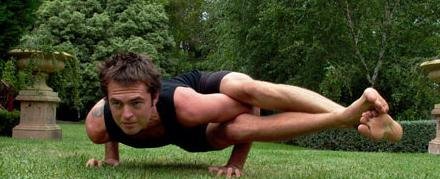
This supreme compassion exists in everyone. Therefore, all the great beings say, come into the realm of your heart. Bathe in the light of your own heart. Drink the nectar of compassion from the wellspring of your own heart. Don't look for compassion anywhere else, from anyone else. It is inside you. You are the owner of this great virtue.Yoga and sport are often seen in opposition, by nature of the quiet approach in yoga in contrast to the competitiveness of sport. In yoga we talk about practice, whereas in sport emphasis is placed upon training. What is most important however, is the attitude towards the development and the attainment of the individual's aim. Ashtanga Yoga is the type of yoga which was created and established by a master named K. Pattabhi Jois. Due to its theory containing eight different limbs, or components, it is also known as "Eight-Limb Yoga.

Meditation Instructions
Metta Meditation: Cultivate compassion and loving-kindness.
Support Meditation: Recognize the invisible network that supports you.
Morning Meditation: Set an intention to direct your energy.
Blend Asana and Meditation: Use the focus of your yoga practice to create mental stillness.
Basic Awareness Meditation: Awareness of your mind is the first step in meditation.
Metta Meditation: Cultivate compassion and loving-kindness.
Support Meditation: Recognize the invisible network that supports you.
Morning Meditation: Set an intention to direct your energy.
Blend Asana and Meditation: Use the focus of your yoga practice to create mental stillness.
Basic Awareness Meditation: Awareness of your mind is the first step in meditation.

Breathing Exercises
Relax Your Face, Jaw, and Throat: Releasing Tension in the Breath
Basic Breath Awareness: Conscious breathing starts with awareness.
The Hug Breath: The hug breath is a simple breathing practice that increases awareness and produces a sense of general well-being.
A Breath Visualization: Bring an awareness to the spine that will make it easier to find a natural alignment and energy in any yoga pose.
The Breath of Connection: Rediscovering your connection to the big picture.
Effort and Ease: A breathing exercise for expanding and shifting awareness.
Throw Things Out: A breathing exercise for change.
Pursed Lip Breathing: A simple technique to slow down the breath.
Mudra Vinyasa
Namaste Mudra Vinyasa: Reflect on the meaning of "namaste" with a mudra vinyasa that expresses our interdependence and connection.
The 3-Stage "Om" Breath: Cultivate a deep inhalation and a slow, complete exhalation. Add the "laughing buddha" mudra vinyasa to deepen the emotional quality of joy.
Abhaya Mudra: The mudra of fearlessness, protection, and peace.
Asana and Breathing
Abdominals Awaken! A short asana sequence that wakes up the belly, inviting a more powerful breath into the rest of your asana practice.
Psychology of Breathing
Breathing as a Act of Unconditional Acceptance: Everything you need to know about acceptance, you can learn from the breath.
The Politics of Breathing: Why are women are still holding their breaths? How emotions and beliefs influence breathing habits.
Relax Your Face, Jaw, and Throat: Releasing Tension in the Breath
Basic Breath Awareness: Conscious breathing starts with awareness.
The Hug Breath: The hug breath is a simple breathing practice that increases awareness and produces a sense of general well-being.
A Breath Visualization: Bring an awareness to the spine that will make it easier to find a natural alignment and energy in any yoga pose.
The Breath of Connection: Rediscovering your connection to the big picture.
Effort and Ease: A breathing exercise for expanding and shifting awareness.
Throw Things Out: A breathing exercise for change.
Pursed Lip Breathing: A simple technique to slow down the breath.
Mudra Vinyasa
Namaste Mudra Vinyasa: Reflect on the meaning of "namaste" with a mudra vinyasa that expresses our interdependence and connection.
The 3-Stage "Om" Breath: Cultivate a deep inhalation and a slow, complete exhalation. Add the "laughing buddha" mudra vinyasa to deepen the emotional quality of joy.
Abhaya Mudra: The mudra of fearlessness, protection, and peace.
Asana and Breathing
Abdominals Awaken! A short asana sequence that wakes up the belly, inviting a more powerful breath into the rest of your asana practice.
Psychology of Breathing
Breathing as a Act of Unconditional Acceptance: Everything you need to know about acceptance, you can learn from the breath.
The Politics of Breathing: Why are women are still holding their breaths? How emotions and beliefs influence breathing habits.




